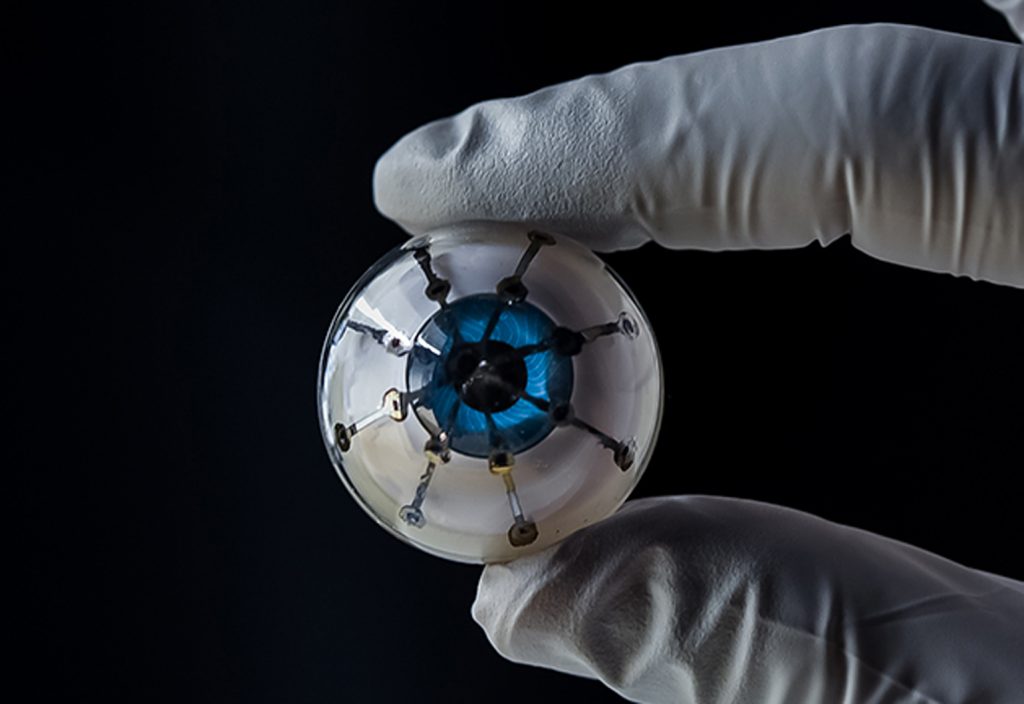Researchers have 3D printed light receptors onto a hemispherical surface for the first time, a significant step towards making bionic eyes a reality.
US-based researcher Professor Michael McAlpine, the co-author of a study published last week in Advanced Materials, said bionic eyes are usually thought of as science fiction. But the custom-built, multi-material 3D printer used by his team has brought them “closer than ever” to becoming fact.
Their 3D-printed semiconductors, which were placed on a hemispherical glass dome, achieved an impressive 25 per cent energy conversion efficiency from light to electricity.
“We have a long way to go to routinely print active electronics reliably, but our 3D-printed semiconductors are now starting to show that they could potentially rival the efficiency of semiconducting devices fabricated in microfabrication facilities,” McAlpine said.
Eye in an hour
The creation of the 3D-printed prototype only took around an hour to complete.
The first challenge for McAlpine’s team was to successfully print electronics on a curved medium without the ‘ink’ running down the surface. To do this, they used silver particles that dried in position. The team then printed photodiodes onto the silver base using semiconductor polymer material.
In the next stage of research, the team’s goals are to increase the efficiency of the prototype – especially the photodiodes – and experiment with soft materials that are more suitable for implanting into patients.
An associate professor of mechanical engineering at the University of Minnesota, McAlpine is also a pioneer of other innovative biomedical solutions, including a bionic ear and a technique to directly 3D print electronics or cells onto a human hand. The second technique compensates for movement of the hand under the printer during the printing process.
McAlpine said printing electronics onto skin using a portable 3D printer could be useful for soldiers in the field. For example, they could 3D print a functioning solar cell, or a chemical or biological sensor onto their bodies. He also said the 3D printer could be used to help heal wounds.
“If you have a skin wound you could directly print cells on that skin wound using our 3D printer,” McAlpine said.
Other breakthroughs include 3D-printed ‘bionic skin’ that incorporates touch sensors to allow surgeons operating with a camera and robotic hand to receive touch feedback, and a model prostate with embedded sensors that provides feedback to surgeons practising procedures. He has also engineered a 3D-printed silicone tube that can guide the regrowth of spinal nerves after an injury.
McAlpine said the key to his success is a willingness to take on big projects, rather than focusing on many small ones.
“We have so many ideas. We look forward to spending the next several decades at the University of Minnesota pushing the limits of what 3D printing can do.”
